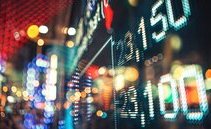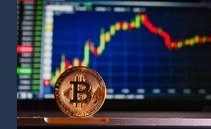How trading short-term market movements (order flow trading) works.

Order flow trading has made a huge splash on the English-speaking trading scene in recent years. This article explores the concept of order flow trading and how it’s changing the trading scene.
What is order flow trading
If you’re watching active markets like large stock indexes or major currency pairs, you’ll quickly notice that market events exhibit different characteristics at different times of the day: markets are typically particularly lively in the first two hours after major markets open (European stock exchanges in the morning, US stock exchanges in the afternoon), while they are turned off in the evening.
In many markets, it is now possible to trade almost 24 hours a day. But during most of the time, prices move only in a narrow area, so that the short-term oriented daytrader is dealing with simple noise. In this case, it is better not to trade, because the probability of price movements cannot be estimated and the risk is therefore too high.
The day trader necessarily needs price movements, which he can anticipate and trade with controlled risk. This is where the concept of order flow comes into play.
leggi anche
Stock market: what is it and how does it work

What moves the price?
Many private traders are not sufficiently aware that price movements in the markets are due exclusively to the concrete trading activities of market participants: the price increases when and because buying activity exceeds the willingness to sell at a price level. The price drops when the opposite occurs.
If market players do not execute trades, nothing happens in the market.
The buying and selling activities that take place over time are called order flow. It is the flow of incoming and executed buy and sell orders. This order flow moves the market. It is never constant, but gradually changes its character, depending on the trading activities of market participants. Sometimes many orders are entered into the market in a short time, sometimes very few.
Sometimes it’s a big mess of buyers and sellers and sometimes only one side prevails. It is likely known to anyone who has been following the markets for a while that the flow of orders and the resulting price changes often also exhibit a choppy and wave-like pattern.
How does order flow trading work?
These observations represent the starting point for order flow trading. In short, these are traders who correctly evaluate the character of order flows and therefore the current market condition, to execute quick, short-term trades based on their evaluation (scalping). The order flow trader, who recognizes that the market is currently flooded with buy orders, wants to ride this wave and therefore buys immediately.
He will hold his position for a short time and close it as soon as he notices that the flow turns towards sales and the expected price movement is about to end or is not developing as expected. Such trades often take place within minutes or seconds and carve out only short stretches of the price movement.
For this reason, the expert order flow trader finds dozens of opportunities to exploit in lively markets every day. The profit and loss potential of individual order flow trades is relatively low. The order flow trader gets his daily profit from many small individual trades. The opportunity/risk ratio (CRV) will move into the zone close to 1:1 (stop loss and take profit are approximately the same distance from the entry), i.e. to a level that would be unacceptable for many other trading approaches.
High success rate
The reason order flow traders can survive with such CRVs and relatively small profits is that they can or should have an exceptionally high success rate: successful order flow traders can achieve a profitable trade rate of 75 percent or more. Since it does not respond to individual orders, but to larger market transactions, the odds are shifted in favor of the trader: where strong buying activity prevails, it can be assumed that this activity will continue for a few seconds or minutes and will not stop abruptly in the second following.
Recognize the order flow
What counts as strong buying or selling activity depends, of course, on the eye of the beholder. This is the peculiarity of this approach: order flow traders have a trained eye that allows them to know what is happening. Furthermore, in principle, they trade with bare charts, i.e. without indicators or with only a few indicators for orientation. The focus is mainly on current market dynamics – on the “here and now” of order flow.
Unlike all other trading approaches, the orderflow trader does not focus on the question “What should I do and when?”, but “What happens in the market; What is the order flow?”. If the trader has recognized this, the question of how to react is almost superfluous. But how does the trader learn to recognize the order flow?
It’s about market experience. The trader must have actively observed a particular market for a long time to learn how it usually behaves. It’s not enough to simply look at the screen. The trader must also actively deal with perceived events, think analytically, interpret, and learn to interpret what he observes.
leggi anche
How to buy Bitcoin ETFs

Orderflow trading as a skill
Successful order flow trading is not based on simple theoretical knowledge but on real skill. It is appropriate to distinguish two levels: on the one hand, market competence in the strict sense, and on the other, the psychic profile of the trader. Market competence is the trader’s ability to adequately evaluate the current market situation, i.e. the character of the order flow.
This competence can only be established through targeted observation of the market. This is best learned with the help of a guide, which is why it is advisable that order flow trading is learned from competent mentors. For example, long-term online offers such as trading rooms, Skype groups or professional coaching services are available, although it should be emphasized that many providers in this sector are completely unreliable.
The psychological side probably represents an even bigger obstacle: evaluating the market situation is difficult, but without a mechanical trading system or indicators you need to rely only on your market expertise and trade on this basis. But even those who don’t dare to do this type of "hands-free" trading can benefit from a trained eye for order flow in other trading approaches. Thus, recognizing order flow can also be a good support for entry and exit decisions in the case of indicator-based trading systems.
Order flow trader technical infrastructure
Orderflow trading not only requires special personal qualifications of the trader but also has a tailor-made technical infrastructure and stock market connections available for this trading style. Most order flow traders operate in the futures markets since this ensures high liquidity and high-quality market data. It is important not only for the real-time quality of the market data but also for a fast and professional trading app, which makes the data available to the trader so that it can be optimally grasped visually. This includes an accurate real-time chart (some order flow traders even use tick charts) as well as a list of executed orders in the market.
Furthermore, the order flow trader should have as direct an exchange connection as possible so that his trades are executed with the lowest possible latency: since he only trades for a few seconds, this is very important for obtaining economic exits and entries. As everywhere in trading, the order flow trader competes with other traders, and the one who can make decisions and implement them faster wins.
Conclusion
In the short term, order flow trading is an interesting opportunity to participate in the order flow market and generate profits. However, an in-depth knowledge of the order flow of the market in which you operate is necessary to gain a sufficient advantage. If this is too short-term, order flow can also be applied in the long term as an additional complement to your entry and exit criteria.
Original article published on Money.it Italy 2020-02-14 12:15:30. Original title: Orderflow Trading: cos’è e come funziona




